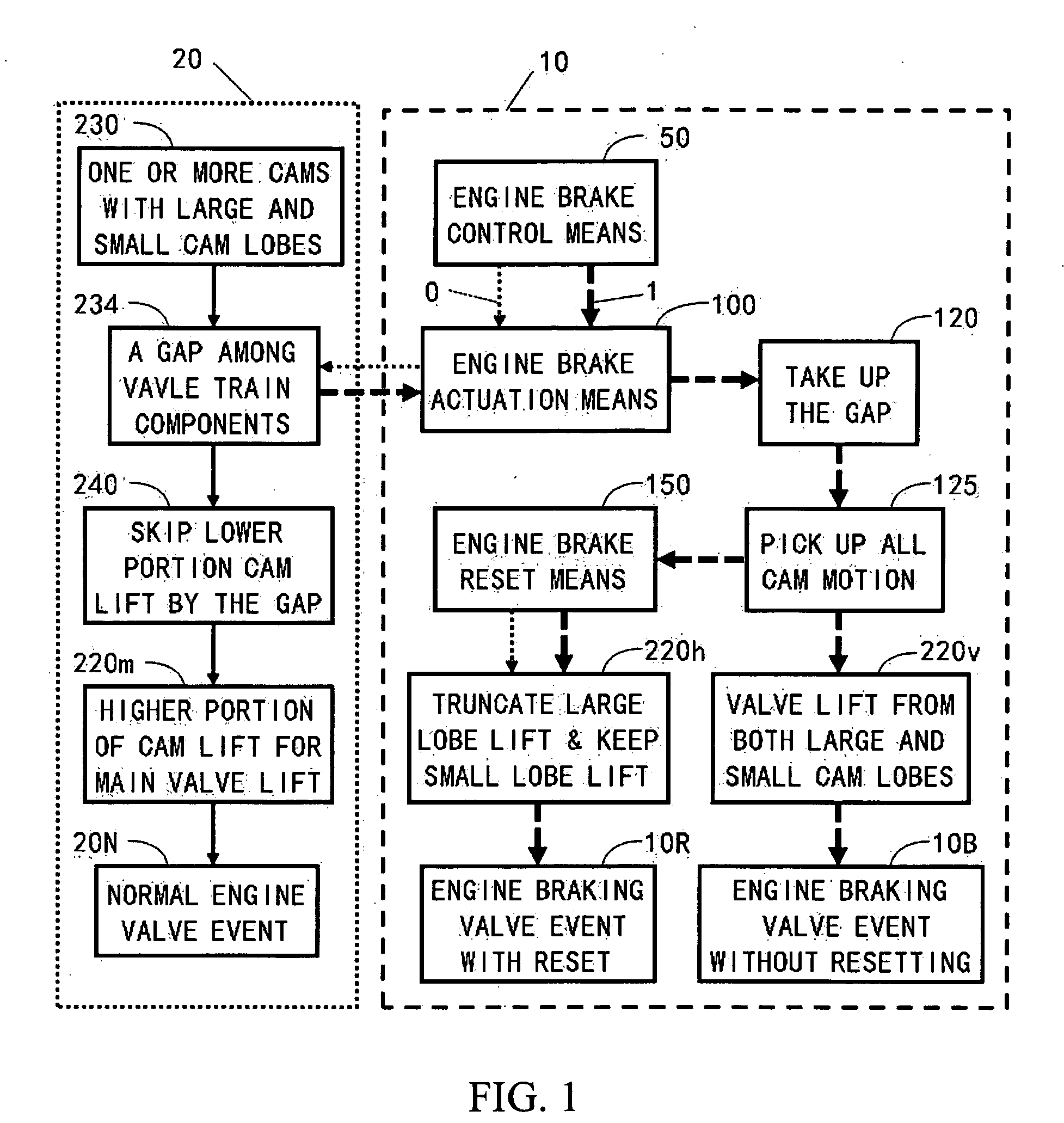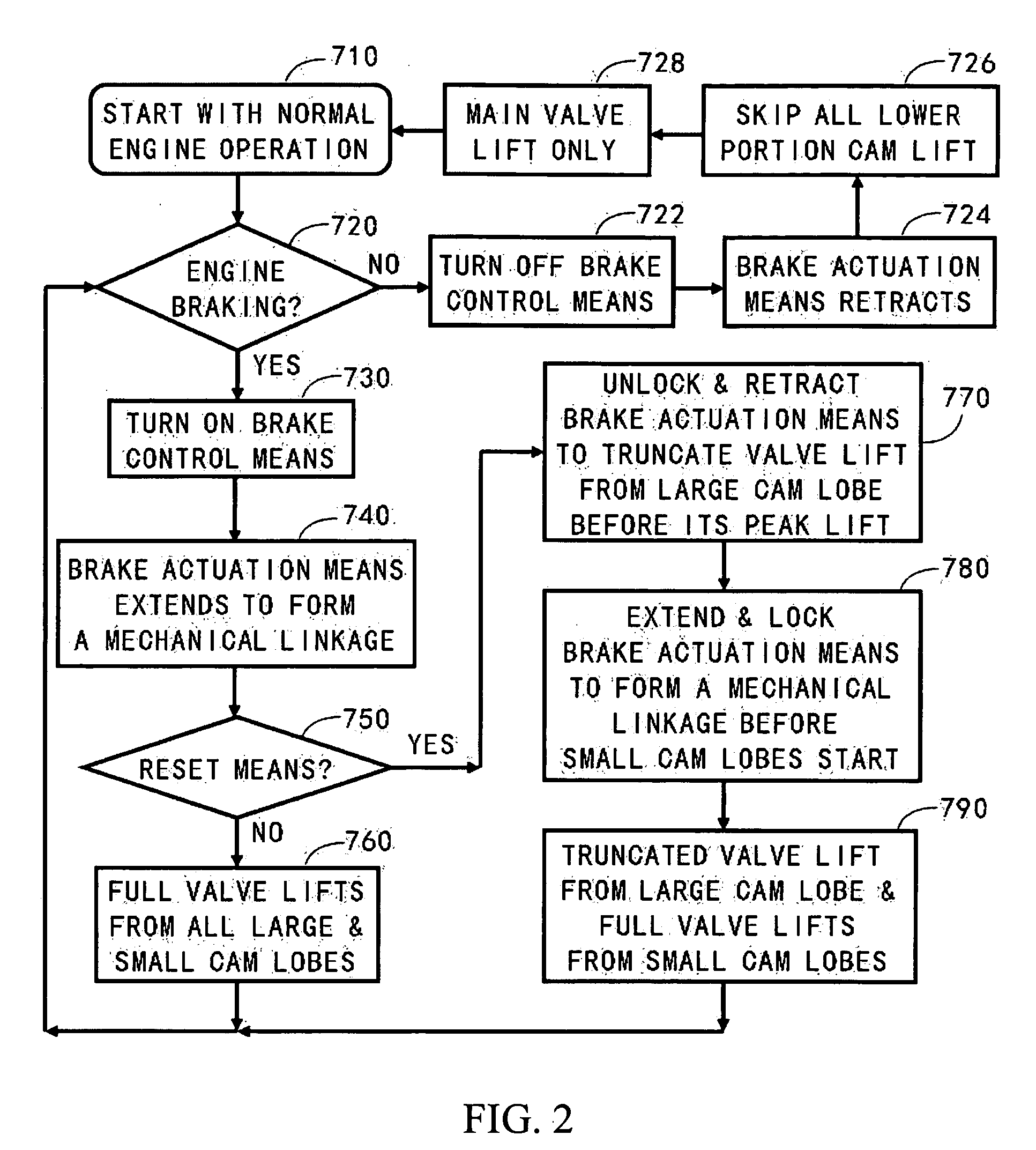While the normal drum or disc type wheel brakes of the vehicle are capable of absorbing a large amount of energy over a short period of time, their repeated use, for example, when operating in hilly
terrain, could cause brake overheating and failure.
The use of an engine brake will substantially reduce the use of the wheel brakes, minimize their wear, and obviate the danger of accidents resulting from brake failure.
In this way, it is alleged that wear on the engine brake
system is decreased since the introduction of the engine brake only takes place during a small part of the total amount of the up-shift process.
This arrangement may add unnecessary height, weight, and costs to the engine.
Many of the above-noted problems result from viewing the
braking system as an accessory to the engine rather than as part of the engine itself.
This also leads to an unnecessarily large amount of oil that must be compressed before activation of the
braking system can occur, resulting in large compliance and less control over the timing of the compression braking.
Moreover, the control valve is a manually operated rotary type valve requiring actuation by the driver often resulting in unreliable and inefficient braking operation.
Also, rotary valves are subject to undesirable
fluid leakage between the
rotary valve member and its associated cylindrical bore.
Although the engine brake
system disclosed in the '385 patent has enjoyed considerable commercial success, it has some drawbacks.
One of the drawbacks is that it includes a small and carefully defined hole for the transport of oil, which causes a high sensitivity to clogging and tolerances.
In addition, this previously known valve causes a relatively slow
coupling and de-
coupling, which is particularly noticeable in connection with gear shifting.
Also, the design is sensitive to external disturbances, for example in the form of temperature changes and
pollution such as, for example,
dirt particles or coatings.
Another drawback is related to the hydraulic actuation of the engine brake
system, which inherits with high compliance.
High compliance leads to large
valve lift deflection, which leads to increased valve load.
Therefore the system taught by the '385 patent is not suitable for use in reducing engine speed at an up-shift.
Another problem with such prior art engine brakes is that the normal operation of the exhaust valve is affected during brake operation.
These recesses, and the abnormally extended exhaust valves, interfere with optimal engine design from the point of view of other considerations such as emission controls.
An additional
disadvantage of the know arrangement is that it does not have an easy way or a proper lash adjusting means to set the valve lash.
First, after the braking valve is lifted by the brake
piston, the valve bridge is tilted and the followed normal valve actuation on both the braking valve and non-braking valve by the
rocker arm is asymmetric or unbalanced.
Second, the brake system can only fit on a particular type of engines that have the “parallel” arrangement of the rocker arm and the valve bridge.
However, resetting the braking
valve lift around the compression TDC is very problematic.
First, the duration and magnitude of the valve lift for engine braking is very small and even smaller for resetting.
Second, the resetting happens at around the peak engine braking load and causes
high pressure or large load on the reset valve.
If the resetting happens too soon, there will be too much braking valve lift loss (lower lift and earlier closing) and lower braking performance.
If the resetting happens too late, the braking valve will not be able to close before the main valve event starts and cause asymmetric loading.
Therefore, the integrated rocker engine brake according to the '730 patent may not work well at high engine speeds when the reset duration and height is extremely small and the braking load or pressure on the reset valve is very high.
It is clear from the above description that the prior-art engine brake systems have one or more of the following drawbacks:(a) The system can only be installed on a particular type of engines.(b) The system has
slow response (on & off) time.(c) The system is hydraulically driven and has large compliance resulting in high braking load.(d) The system causes asymmetric loading on valves or valve bridge guide.(e) The system has too many parts,
high complexity, and not work well at high engine speeds.(f) The system has no easy way to set lash for engine braking valves.(g) The system is not reliable and sensitive to external disturbances.(h) The system affects normal engine performance (efficiency and emission).
 Login to View More
Login to View More  Login to View More
Login to View More 


